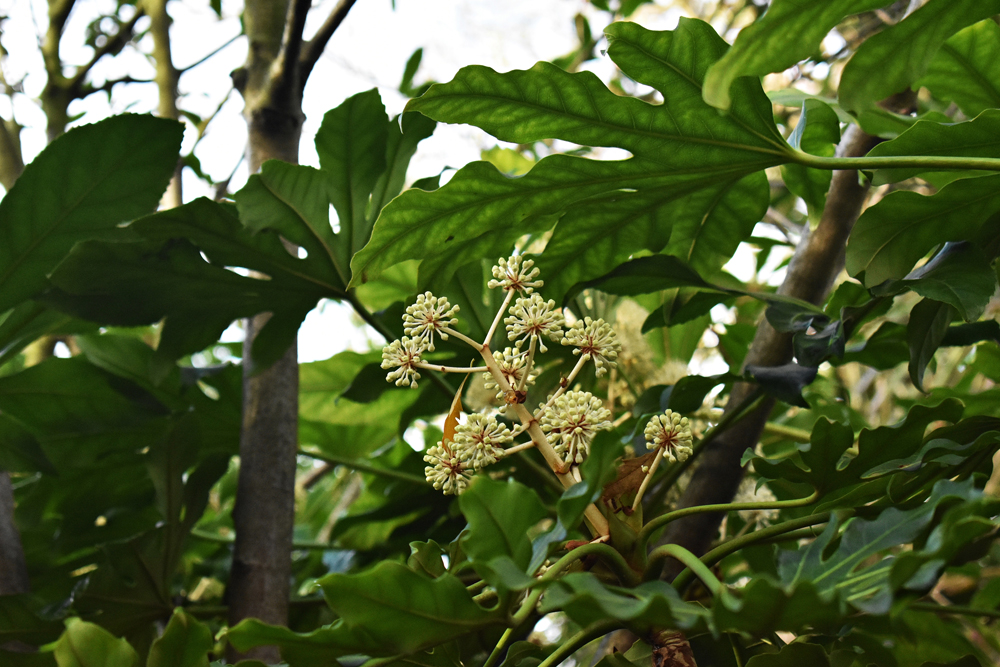Dizygotheca elegantissima / Polyscias fruticosa
Common Name:
False Aralia (dizygotheca), Ming aralia (polyscias)

General Information:
Aralia are ornamental shrubs, although the hardy varieties have compound leaves up to three feet in length, making them unsuitable for bonsai. All can be successfully grown as indoor bonsai.
Lighting:
Prefers a bright location with indirect sun. Can do well with relatively low light levels.
Temperature:
Never below 60F for the Aralia species listed. 50F is the minimum for Polyscias, although it prefers a winter temperature of between 59-80F. One of the few plants that actually grows better indoors as it does not appreciate direct sun and is very intolerant of wind.
Watering:
Needs a lot of water, and constantly moist soil, but can develop root rot if water is allowed to stagnate around the roots. Misting is essential.
Feeding:
Every two weeks during growth, every six weeks in winter. Success using Osmocote has also been reported.
Pruning and wiring:
Usually shaped by pruning rather than wiring. Cut shoots back to one or two leaves when they have reached four or five. Removing inner branches results in a more tree-like appearance. Partial defoliation can be used effectively for leaf reduction. A slow grower, but will form more buds in very humid conditions such as a greenhouse or plastic bag. Remove suckers from single-trunk specimens to encourage fuller trunk growth.
Propagation:
The best method is to use root cuttings or air-layering. The plant suckers profusely, so division is another option. Softwood cuttings can be taken in spring, but require bottom heat of 75F, use of rooting hormone, and a high humidity to root. Seeds may be planted in autumn, but germination is uncertain.
Repotting:
Every 2-3 years in spring. Use a compact soil mix, but insure good drainage. Roots tend to be fragile and few, so caution in repotting is necessary. A deep pot is generally safer than a shallow bonsai pot. When Polyscias are to be root pruned, it helps to induce a short dormancy by keeping them at a temperature of 50F for about three weeks prior to repotting, then returning them to a temperature of at least 59F immediately afterwards to stimulate root growth.
Pests and diseases:
Eelworms, mites, scale, verticillium wilt, root rot, alternariose, bacterial canker.
Some species suitable for bonsai:
Aralia blacky - Desirable for bonsai because it forms a large trunk, this Aralia has smooth edged, scroll-shaped leaves.
Aralia castor (also called Dizygotheca castor) -dark green leaves marbled with white.
Aralia elegantissima (also called Dizygotheca elegantissima) similar to A. castor, but larger.
Polyscias fruticosa (also called Aralia ming) -white bark.
Bibliography:
Ainsworth’s “The Art of Indoor Bonsai”
Samson’s “Creative Art of Bonsai”
Species information from Thomas (ed.) “The Hearst Garden Guide to Trees and Shrubs.”
Compiled by Sabrina Caine
